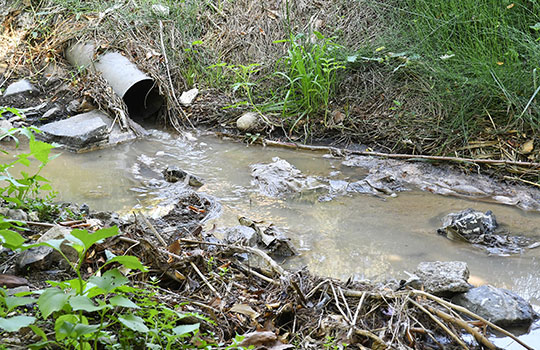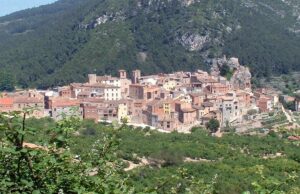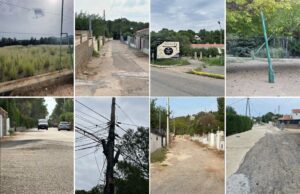Wastewater directly into rivers
Have you ever wondered what happens to wastewater in municipalities without a treatment plant? “Nothing is done. Everything goes straight into the river”, laments Judit Giró, mayor of Capafonts since last May. This village, located in the Prades Mountains at the source of the Brugent River, has never treated its wastewater. It flows directly into the river, which passes through Farena — also without a treatment plant — before reaching the Francolí River in La Riba.
Capafonts is not an isolated case. Twelve municipalities in Baix Camp lack wastewater treatment infrastructure: L’Albiol, Almoster, Arbolí, L’Argentera, Capafonts, Castellvell, Colldejou, Duesaigües, La Febró, Maspujols, Pratdip and Vilanova d’Escornalbou. Some, like Almoster or Castellvell, redirect their wastewater to nearby plants (such as the one in Reus). In Pratdip, mayor Joan M. Rovira explains: “We do a small, makeshift treatment on a pond, then discharge the water into the ravine.”
A responsibility of the Catalan Water Agency
In most of the affected villages, the situation is the same as in Capafonts, and local officials are concerned. Setting up a treatment plant is not the responsibility of municipalities, but of the Catalan Water Agency (ACA). Contacted by Diari de Tarragona, the ACA did not respond to our questions.
The Baix Camp Regional Council is aware of the problem. Its president, Joaquim Calatayud, highlights the serious environmental consequences and delays caused by budget restrictions: “Practically none of the planned actions have been carried out in recent years.”
He refers in particular to the case of Borges del Camp, where the treatment plant, nearly completed ten years ago, was not put into operation until 2019. During that period, wastewater was discharged into the Riera d’Alforja, leading to an ecological crime complaint by the El Freixe association. Calatayud was ultimately acquitted: the court acknowledged that the discharges were authorized by the ACA during construction.
But what can mayors do if the ACA does not finance the plants? Judit Giró remains pragmatic: “We’re still waiting for a meeting. There seems to be willingness, but nothing concrete. If we have to wait ten years, we’ll consider building a local ecological plant.” Meanwhile, the municipality is raising awareness, encouraging the use of eco-friendly cleaning products and exploring alternative solutions.
The ACA begins a slight recovery
Joaquim Calatayud hopes for a shift: “It seems the ACA is beginning to come out of the black hole.” He mentions the expansion of the Cambrils treatment plant, the tender process for the one in Botarell, but notes that Maspujols and Vinyols are still waiting. “Let’s hope small villages will now be prioritized,” he concludes.
Compelling evidence of pollution
Diari de Tarragona observed the discharges firsthand. In Duesaigües, the Reial stream flows into the Riudecanyes reservoir. Near a restaurant, a pipe continuously releases foul-smelling water — a mix of sewage and detergents. The water is brown, with toilet paper stuck to stones and even a sanitary pad floating between the rocks.
The same scene can be seen in Maspujols, where wastewater is discharged into the local river, which flows through Riudoms before reaching Cambrils.
The GEPEC (Group for the Study and Protection of Catalan Ecosystems) warns: “These discharges seep into the groundwater and contaminate wells.” An absurd situation in a region that has water but where neglect leads to pollution, forcing more extraction from the Ebro River.







